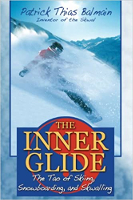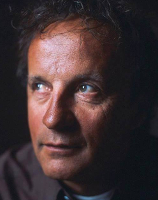
Image by adege
Most of us have a relationship to the outside world based on conflict, the power struggle. It is quite tiring. One must always be on the alert.
Could there be another way of doing things?
To Move Toward . . . or Distance Yourself From
Because of our characters and personal histories, each of us has a tendency to either move toward people, things, novelty or to move away from them.
None of us are all one or the other; we are one or the other depending on the context. For example, I am shy and have a tendency to distance myself from people by refusing to make contact; on the other hand, when I love an activity I go toward it without any doubt or hesitation.
We can watch ourselves and determine if we are more "moving toward" or "going away from" kinds of people. This is all it takes to face a new situation. Once the pattern has been recognized, we can begin to craft a method of working on ourselves to break our habitual patterns.
Physically speaking, a person who "goes toward" will have the tendency to favor skiing on the balls of his feet, whereas someone who "moves away from" will have a tendency to rely more on his heels. The first stage is the realization of this fact, the second is to recognize it in yourself and accept it in the action, and the third is to begin to reorient your body.
Get The Latest By Email
This practice consists of experiencing the two extreme positions, and provoking and feeling the state of mind associated with each. It is not a question of one being a "good" attitude and the other being "bad"; they are two attitudes that inspire physical and psychological tensions.
Being Rooted in the Earth
To get out of this chain of interlinked tensions, we start by discovering how to establish a sense of being rooted in the Earth. This rooted sensation consists of resting on your feet in a standing position and feeling the ground and the contact of the soles of your feet with the ground. If the mass of your body is projected over the middle of your feet, your body can naturally relax and be freely available for whatever is required of it.
This stance permits you to detach yourself from achieving the goal ("moving toward") or fleeing ("moving away from") through orienting your energy toward the center of the body and, more specifically, in that part of the body that connects the body to the Earth: the soles of the feet. This orientation helps us to break free of the automatic response of either moving toward or distancing ourselves from an objective.
But be warned. This impulse will come back at a gallop. When the impulse arises to psychologically extend yourself toward a particular objective, the old habits will reemerge and restore the chains of tensions to their original place.
What can you do to avoid this? Once you have planted your "root" it needs to be fed -- in other words, this bond to the Earth needs to be recalled and practiced on a regular basis.
Relaxed in the Moment, Ready to Take Action
Between "going toward" and "moving away from" there is another state of being; it is a relaxed presence that is ever ready to act. This strong connection to the Earth places us in a new dynamic.
Physically relaxed, the mind can open itself to any situation with discernment. There is no room for doubt, which is intimately connected with the projection into what lies ahead, behind, or somewhere else.
Projection is the source of doubt; this stimulus arising from the depths of the being lifts the diaphragm and the lungs. When you are in doubt, you will find yourself suspended and cut off from your root, like the inexperienced swimmer who tries to keep his mouth out of the water.
The sensation of being rooted makes it possible to place the body spheres correctly and, primarily, to release tensions. This physical posture frees the mind. Establishing a sense of being rooted to the Earth is essential to centering in the moment.
In each one of us there is a space, a strong point for each of our thoughts and actions, an "empty source." The connection to this source is found in silence and through a movement within. I forget the outside so that I may finally be better present to experience it.
The more I "inhabit" my body, the more lucid I am in the world. The energy used by the brain is located within the body. If my mind acts like a tyrant over my body, the body becomes taut in order to reach its goal, and no longer provides either a good supply of energy or the perceptual acuity required for the activity. Stress that usurps control of the body is nothing more than a chain of tensions.
Getting Carried Away by a Situation
 The skier desires what is outside of him. Projected toward the goal, he creates a state of general tension in his body: the feet are buttressed, the legs taut, the belly lifts and retracts, the shoulders hunch, the center of gravity is "nailed down." The body is no longer freely available. I am, of course, describing extreme situations, but we can read phenomena of this type in our posture, no matter what the level of our technical ability is.
The skier desires what is outside of him. Projected toward the goal, he creates a state of general tension in his body: the feet are buttressed, the legs taut, the belly lifts and retracts, the shoulders hunch, the center of gravity is "nailed down." The body is no longer freely available. I am, of course, describing extreme situations, but we can read phenomena of this type in our posture, no matter what the level of our technical ability is.
All these tensions are the result of the skier's refusal to accept the situation for what it is. Either he fears or wants, but the essential fact is that he desires the situation to be something other than what it is. These relationships of attraction or repulsion to the surrounding environment characterize the person who seeks to dominate the outside world and who, by the same token, finds himself dominated by it. This is the link of cause and effect.
When the skier is outside of himself, he is investing everything in the goal instead of in his body and senses, which will lead to the goal. The body is relegated to the function of satellite, revolving outside the center of the action.
Psychologically carried away by the goal, the skier loses all lucid grasp of the present moment and its requirements. For example, some skiers confuse visual anticipation and physical anticipation. That is to say, they physically stretch toward the end of the turn by replacing the curved trajectory of the center of gravity with a straight line that will take them more directly to their objective, the effect of which is for the edge to lose its grip. Often this phenomenon is present but is hard for the skier who is unaware of its existence to detect. Moreover, a good number of joint traumas arise out of this gap between body and mind within an action. One could call that impatience, if not greed.
When we close ourselves off to or refuse to accept the world as it is, we regard the world that surrounds us as an aggressor seeking to prevent us from reaching a longed-for objective. Wishing and being able to realize them do not always form a happy couple.
Being at the Heart of the Action
Opening to the outside world begins with accepting the world as it is (to say yes to the world, to say yes to the situation). Openness to the world is a state that is simultaneously psychological, emotional, and physical. Internally this openness is constant. It is with this attitude as a starting point that oneness can manifest. Accepting the world for what it is, the skier can create a dynamic equilibrium between his body and the laws governing the world around him. This balance will open the gates of expression for the skier: the gesture adapted to the situation.
For the first step, I center myself and place myself psychologically at the heart of my sensations, at the center of my body. For the next step, I open myself to the information the outside world is sending me while maintaining my anchoring within my body.
The acceptance of being unattached to the goal facilitates this centering and provides the looseness and relaxation necessary for right action. Harmony cannot manifest itself if there is a desire to own the next moment. Harmony finds its source in the "here and now." Responding with acceptance to the myriad situations that follow on each other's heels, the skier makes himself one with the present moment. He enters into the space of expression.
Inner Harmony and Healthy Communication with the Environment
Inner harmony is the source, the strong point for healthy communication with the surrounding environment. Internal conflict drags the skier into a dualistic relationship with the outside world. Inner harmony is founded upon self-acceptance. Not the image one has of oneself or seeks to portray to others, but the being who is uphill of the image, with its qualities and defects, strengths and weaknesses.
When the skier truly accepts who he is, the race to possessing everything stops. Tensions fall away. Following this moment, the skier begins to be creative, to express himself freely without having to respond to a more or less conscious diagram.
The simple fact of ceaselessly wishing to be a little farther than the place one is produces a terrible frustration, which is a source of stress and states of limitation. Ceasing to race after what is does not mean simply doing nothing. Quite the contrary! Letting go of what surrounds one awakens peace of mind and self-esteem. What better way could there be to place yourself in the heart of the action?
A movement that originates in the center of gravity permits the skier to communicate effectively with the surrounding environment through the intermediary of his senses: through his feet he perceives the ground, through his hands the air, through his eyes the environment, and so forth.
All of this information is managed to keep the center of the gravity at the center of the movement at every moment. The body has the possibility to open itself to the world if it is inhabited at every moment by a skier who is attuned to that.
Originally published in French under the title
La Glisse Intérieure. ©2005, Translation ©2007.
Reprinted with permission of the publisher,
Destiny Books, a divn of Inner Traditions Intl.
www.innertraditions.com
Article Source
The InnerGlide: The Tao of Skiing, Snowboarding, and Skwalling
by Patrick Thias Balmain.
 Patrick “Thias” Balmain, creator and promoter of the skwal--a type of snowboard that positions the feet and the body facing forward on the board--discovered that by applying a concentrated awareness to movement activities such as skiing, a balance in motion can be achieved that is pure harmony and joy.
Patrick “Thias” Balmain, creator and promoter of the skwal--a type of snowboard that positions the feet and the body facing forward on the board--discovered that by applying a concentrated awareness to movement activities such as skiing, a balance in motion can be achieved that is pure harmony and joy.
When the mind is completely engaged, not with its thoughts but with the attention it commits to the movement of the body, it brings forth a balance between Earth’s center of gravity and that of the individual that evokes lasting transformations in one’s stance toward life, influencing one’s attitudes, gestures, words, and actions.
About the Author
 Patrick Thias Balmain is a professional skier and snowboarder. In 1992, he created the first skwal, introduced the first commercially manufactured model, and established skwal races on the circuit of international competition. A ski, snowboard, and skwal instructor in Courcheval, France, he has trained countless practitioners, instructors, and competitors in Europe, North America, and Japan.
Patrick Thias Balmain is a professional skier and snowboarder. In 1992, he created the first skwal, introduced the first commercially manufactured model, and established skwal races on the circuit of international competition. A ski, snowboard, and skwal instructor in Courcheval, France, he has trained countless practitioners, instructors, and competitors in Europe, North America, and Japan.
Visit his website at https://thias-balmain.com/







